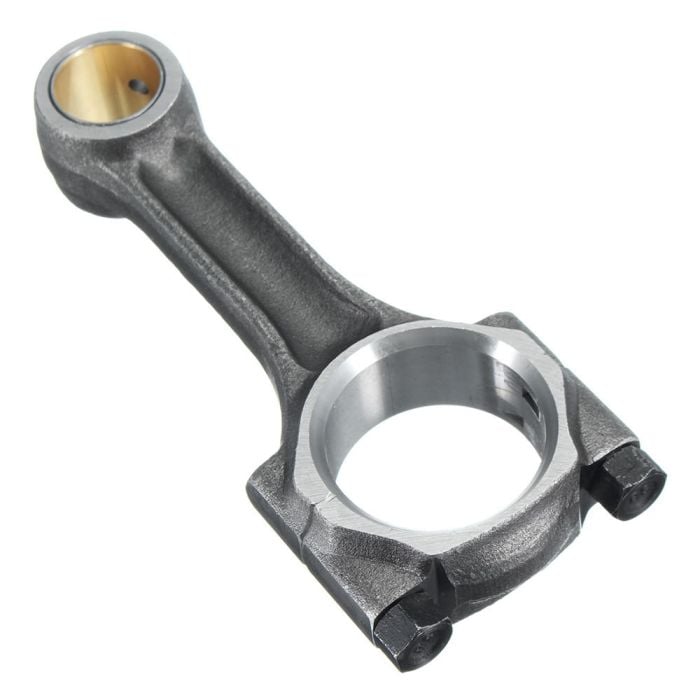Ensure peak performance with a reliable clp engine.
How a Clp Engine Can Boost Effectiveness in Various Industries
The arrival of CLP engines marks a substantial shift in functional effectiveness throughout different industries, driven by their ability to enhance fuel usage and minimize downtime. Industries such as production and logistics stand to gain significantly from their robust style and consistent power result, which promise to enhance operations and improve performance. As organizations significantly prioritize sustainability together with efficiency, the duty of CLP engines becomes much more vital. What remains to be seen is exactly how these innovations will shape the future landscape of commercial operations and their influence on more comprehensive financial trends (clp engine).
Review of CLP Engines
CLP engines, or Continuous Fluid Propellant engines, represent a significant advancement in propulsion technology, specifically for room applications. These engines use a continuous feed system that permits the sustained expulsion of propellant, leading to boosted effectiveness and performance contrasted to typical solid or hybrid propulsion systems. By maintaining a consistent circulation of liquid propellant, CLP engines can achieve more precise drive control, which is important for maneuvering spacecraft in numerous objective scenarios.
The design of CLP engines integrates sophisticated materials and cutting-edge fuel monitoring systems. clp engine. This leads to reduced weight and raised dependability, crucial aspects for long-duration space goals. The constant procedure decreases the threat of combustion instability, a common obstacle in traditional rocket engines.

Advantages in Production
The production of Constant Liquid Propellant (CLP) engines provides a number of notable advantages that improve both effectiveness and cost-effectiveness. One of the primary benefits is the structured manufacturing process, which decreases the complexity connected with standard propulsion systems. By using liquid propellant, manufacturers can attain better accuracy in engine performance, resulting in optimized power output and reduced waste.
In addition, CLP engines assist in a higher degree of modularity, permitting less complicated combination into various production lines. This versatility can significantly decrease lead times and enhance total operational flexibility. The use of CLP technology additionally has a tendency to decrease the need for extensive upkeep because of fewer relocating parts, which converts into lowered downtime and operational costs.

Applications in Logistics
Leveraging Continual Fluid Propellant (CLP) engines in logistics uses significant advantages in operational efficiency and reliability. These engines provide a robust service for various transportation needs, enabling the smooth activity of items throughout huge ranges. The intrinsic style of CLP engines permits constant power outcome, which translates right into smoother and more predictable transport timetables.
Among the essential applications of CLP engines in logistics is in heavy-duty products transportation, where they can drive both ground and airborne cars. Their ability to maintain high performance under differing tons conditions guarantees that delivery timelines are fulfilled, consequently improving customer complete satisfaction. Additionally, CLP engines can be integrated right into automated logistics systems, facilitating real-time tracking and maximizing path preparation.
Furthermore, the sturdiness of CLP engines reduces maintenance downtime, allowing logistics firms to optimize their operational capacities. This is especially advantageous in warehousing procedures, where effectiveness in dealing with and transferring goods is essential. As logistics remains to evolve, the combination of CLP engines represents a forward-thinking strategy that not only boosts performance yet also supports the industry's expanding demands for reliability and speed.
Influence On Energy Performance
Just How do Continuous Liquid Propellant (CLP) engines improve power efficiency in transportation? CLP engines use a constant circulation of fluid fuel, enhancing combustion processes and keeping a stable drive output. This design minimizes energy losses related to traditional combustion engines, where fuel delivery can vary and bring about inefficiencies.
The constant procedure of CLP engines allows for a much more reliable thermal cycle, causing higher particular impulse contrasted to conventional engines. clp engine. This equates to minimized gas consumption for the same amount of job done, dramatically lowering operational expenses across numerous transportation sectors, including air travel and maritime markets
In addition, the capacity of CLP engines to maintain optimal performance under varying load conditions decreases the requirement for regular velocity and slowdown, additionally improving gas effectiveness. Boosted power effectiveness not just adds to cost financial savings yet address additionally leads to lower greenhouse gas emissions, aligning with international sustainability objectives.
Future Trends and Innovations
Arising advancements in Continuous Fluid Propellant (CLP) engine modern technology assurance to change the landscape of transport effectiveness and sustainability. As markets pivot toward greener alternatives, CLP engines stand at the center, incorporating cutting-edge products and layout methods that improve performance while minimizing ecological influence.
One of the most encouraging fads is the fostering of crossbreed systems that combine CLP engines with renewable resource sources. This synergy can maximize gas consumption and lower exhausts, lining up with global sustainability goals. Improvements in computational fluid characteristics (CFD) are promoting the style of more aerodynamically reliable engines, leading to reduced drag and boosted gas performance.
Furthermore, the development of smart monitoring systems is established to boost functional effectiveness. These systems utilize data analytics and IoT innovation to optimize engine efficiency in real-time, making sure that the engines run within their most reliable criteria.
As research study remains to discover alternate propellant solutions-- such as biofuels and artificial fuels-- the future of CLP engines looks appealing. By harnessing these technologies, sectors can not only improve their performance but also read the full info here add considerably to a cleaner, much more sustainable future in transport.
Final Thought
In conclusion, CLP engines stand for a substantial development in performance throughout numerous sectors. The assimilation of advanced materials and fewer moving components lessens upkeep demands, while alignment with sustainability objectives settings CLP engines as a pivotal technology for the future.